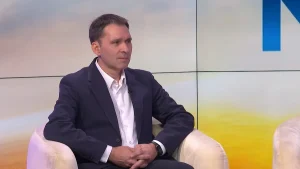On June 21, The Audiencers Festival hosted a number of sessions from publishers around the world about how they are developing engaged, subscriber bases.
Journalism.co.uk rounds up some of the stand-out strategies and main takeaways.
Les Coops de l’Info: from bankruptcy to digital-only
In 2019, the French Canadian local newspaper, Le Soleil, was ready to be bought out. Then a global pandemic happened and plans were scuppered. A government loan bought them some time. Then Le Soleil, with five of its sister titles, went another route: they formed the country’s biggest, local co-operative newsgroup, Les Coops de l’Info, owned by 350 of its employees.
A digital subscription strategy had to be fast-tracked from 12 or 18 months to 12-18 weeks. An off-the-shelf solution was brought in to make this possible in 2020.
Marc Grendon, publisher of Le Soleil says the average value of a digital subscriber is now CA$245 over three years. To earn the same money from digital advertising, a reader needs to visit the site every day, read up to nine articles and see five full ad impressions – and he would not even do that.
The publisher closed its legacy print paper at the end of 2023, keeping a digital-only business with two premium plans: an e-paper or an ad-free experience on the site.
One idea: Print subscribers were handed a three-month “ease in” period with free digital access. Of those who took up the offer, a third moved on to digital plans.
L’Equipe: a leaf out of Netflix’s book
The popular French sports newspaper has 2.5 million digital readers and 190,000 paid digital subscribers.
It is trying lots of new ideas to make sure subscribers are enjoying their plans, from personalizing content with their favorite sports and using gamification, such as monthly recaps of reader consumption, to deepen engagement.
One idea: L’Equipe is testing previews and teasers of content to come, as a way for readers to have something to look forward to. Marketing director Romain L’hote says this is why platforms like Netflix are so effective. But he is running into issues convincing journalists and editors that this is a good idea, as they fear this will give competitors an edge.
UOL: leveraging the “Brazilian Avengers”
Brazil’s largest publisher, UOL, has more than 100 million unique monthly website users. Only Facebook and Google command more attention.
It has a freemium business model. People can get breaking news and trustworthy journalism for free, but its best content sits behind the paywall. Advertising and subscriptions are the two core revenue streams, with the latter increasing steadily.
One idea: UOL has recruited 400 of the best journalists in Brazil who are experts in their field. A specific subscription, UOL Prime, offers exclusive analysis and investigations from 200 of them.
“People don’t pay for commodity content,” says editor-in-chief Flavio Moreira.
Libération: anti-churn strategies
There are lots of reasons why someone might cancel a news subscription. French news organization Libération has a plan for most scenarios.
It has 105,000 paying subscribers, 85% digital and 15% print. It also has 10 million website visitors per month.
One idea: Identify subscribers at risk of leaving (inactivity, upcoming expiry date) and try to move them to longer plans by offering them a good deal.
People prefer to save money (36 euros) than time (two months) by switching to an annual plan. This saves “hundreds” of would-be cancellers a month, says head of subscription marketing Adèle Bacos.
Of the people who want to leave immediately, around half can be talked around to stay by reducing prices, she continues. Sometimes people need to update bank details, and smartphone push notifications are surprisingly effective, with a 52% success rate when they reach the recipient.
Frankfurter Allgemeine Zeitung (FAZ): a ruthless retention strategy
German news organization, FAZ, has reached 135,000 paying digital subscribers since launching its premium tier, FAZ+, six years ago.
That represents a 20% year-on-year growth, which Donika Lilova, head of paid content subscription, attributes to a culture of testing.
It regularly tests price points and attractive offers to welcome subscribers. However, it takes a tougher stance on those about to leave.
One idea: FAZ attempts to save cancellations through last-ditch offers, but once people leave, they can only return at a standard price. No more big discounts. A risky strategy for a subscription business but one that makes people think twice before leaving.




